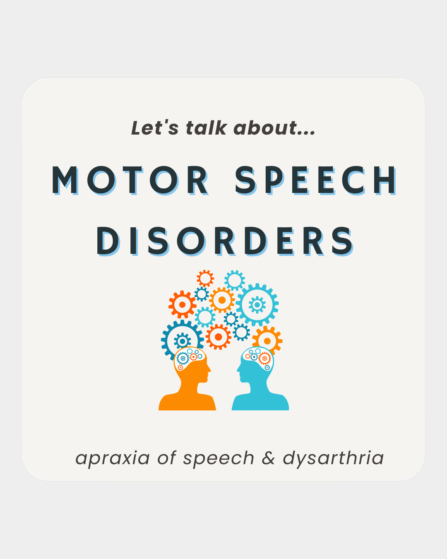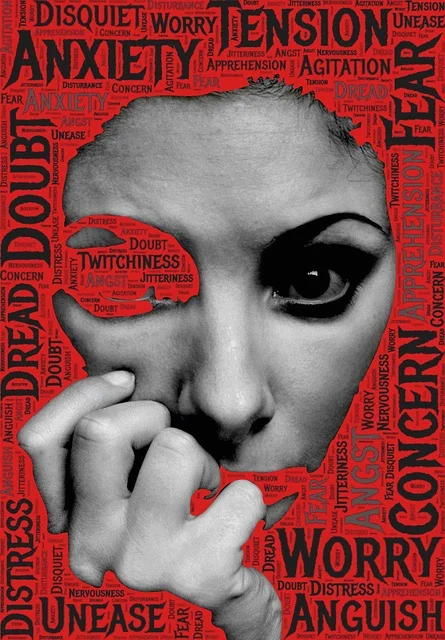Any illness that interferes with a person’s capacity to make sounds that form words is considered a speech problem. It can be brought on by injury to the vocal cords, muscles, or nerves. Ataxia and stuttering are two examples.
This article examines speech abnormalities in its various forms. We also discuss speech problems‘ signs, causes, diagnosis, and course of treatment.
What is motor speech disorder?
A person’s capacity to produce the sounds necessary for interpersonal communication is impacted by speech problems. Language disorders are not the same as them. Language disorders have an impact on a person’s capacity to learn new words and comprehend what other people are saying to them, whereas speech abnormalities stop people from producing the proper speech sounds.

Nonetheless, a person may find it more challenging to communicate their ideas and emotions to others if they suffer from either speech or language impairment.
One of the primary means by which individuals share their ideas, feelings, and thoughts with one another is through speech. Speaking involves exact synchronization of the head, neck, chest, and abdomen, among other body components.
Types of motor speech disorder
People of various ages might suffer from speech difficulties.
Speech disorders can manifest as dysarthria, apraxia, or stuttering. Below, we go over each of these categories:
Stuttering
A speech condition that disrupts speech flow is called stuttering. Stutterers may encounter the following kinds of interruptions:
- People make repetitions when they unintentionally repeat words, vowels, or sounds.
- When someone knows what they want to say but finds it difficult to produce the appropriate speech sounds, they get blocks. Someone may feel as though their words are stuck when they encounter blocks.
- The term “prolongations” describes the elongation or drawing out of specific phrases or sounds.
Stuttering symptoms can change according on the circumstance. The intensity of stuttering might increase with stress, enthusiasm, or irritation. Some people can also notice that a stutter becomes more noticeable when they use particular phrases or sounds.
Apraxia
Every single movement a person makes, including speaking, is controlled by the brain. The majority of the brain’s role in speaking is automatic and unconscious.

The brain communicates with many bodily components to produce speech when an individual chooses to speak. To produce the right sounds, these structures follow instructions from the brain on how and when to move. These speech cues, for instance, govern the flow of air through the mouth and throat, move the tongue and form the lips, and open or close the vocal cords.
Any region of the body can be affected by brain injury that affects motor abilities, which is commonly referred to as apraxia. Verbal apraxia, often known as apraxia of speech, is the specific disability of form of speech correctly.
Dysarthria
When a person experiences muscle weakness in their face, lips, tongue, throat, or chest due to brain injury, it is known as dysarthria. Speaking might be extremely challenging if there is muscle weakness in certain body areas.
Dysarthria sufferers may exhibit the following signs and symptoms:
- speaking impediment
- stammering
- Speaking too rapidly or too slowly
- Talking quietly or softly
- difficulties speaking or moving the tongue
Signs and symptoms
Speech difficulties can have a wide range of symptoms, depending on the disorder’s severity and underlying etiology. Individuals may have various symptoms associated with numerous speech problems.

Those who suffer from one or more speech impairments may show signs of:
- extending or repeating sounds
- rearranging syllables
- adding sounds or syllables to words
- and distorting sounds
- having trouble saying words correctly
- having trouble saying the right word or sound
- speaking in a raspy or harsh voice
- speaking extremely softly
Causes of motor speech disorder
Speech problems may have the following causes:
- brain injury or
- stroke-related brain damage
- weakened muscles
- injury to the vocal cords dementia degenerative diseases such Huntington’s, Parkinson’s,
- amyotrophic lateral sclerosis cancer of the mouth or throat autism
- Syndrome Downward
- loss of hearing
The following are risk factors that may make someone more likely to acquire a speech disorder:
- having a family history of speech abnormalities
- being male;
- Also being born prematurely;
- being underweight at birth;
- and having issues with the ears, nose, or throat
Treatment for motor speech disorder
There are following treatment options for motor speech disorder:

Speech-language pathology
Trained speech-language pathologists provide speech therapy, which is essential for correcting motor speech disorders. These therapists evaluate the articulation, sound sequencing, strength of the facial muscles, and breathe support.
Precise objectives designed to improve motor control constitute the foundation of speech therapy. Additionally, it seeks to enhance communication abilities and fine-tune speech sound places. With this individualized technique, people can overcome speech difficulties.
There is no one-size-fits-all approach to speech treatment. To address particular issues, therapists use a variety of approaches, exercises, and activities. This tailored technique creates a nurturing atmosphere that promotes improvement in speech-motor control.
Medications
As the patient proceeds through treatment, medications become a possible ally. Medication prescriptions are part of a larger plan. It seeks to control symptoms and enhance speaking abilities. These drugs function as specialized instruments. They focus on particular causes and variables that affect motor speech problems.
Crucial drugs in the supply:
- Relaxants for muscles. These drugs aid in reducing spasms and stress in the muscles. They help with better muscle control, which is essential for speaking.
- Medications that reduce inflammation. These medications, which target inflammation, can treat disorders affecting the coordination and muscles of the face.
- Drugs that protect the brain. It may be necessary to use these drugs, which are made to nourish and shield nerve cells. Their objective is to lessen the negative effects of neurodegenerative diseases on speech-motor coordination.
Even though they are very important, drugs frequently complement other therapies. The cooperative strategy seeks to fully solve motor speech difficulties. It acknowledges the distinct difficulties presented by every single instance.
Surgical Procedures
In certain instances, surgical procedures are a suitable course of action for motor speech disorders. When speech problems are made worse by structural defects, surgical procedures are taken into account.

Surgical interventions of the following kinds can be used:
- Palatoplasty. The goal of this surgical surgery is to reconstruct or reshape the palate. It deals with problems that affect where speech sounds are placed.
- Pharyngoplasty. This technique targets the pharynx with the goal of improving throat function.
- Nerve restoration. Speech-related muscles can potentially be impacted by nerve injury. In these situations, surgical procedures might include rebuilding or repairing damaged nerves.
Surgical procedures try to address the underlying physical problems that cause speech difficulties. These operations focus on the particular elements that affect speech motor control. Regardless of whether nerve damage needs to be addressed or oral cavity components need to be repaired.
Conclusion
A person’s capacity to generate the sounds that form words is impacted by speech problems. They are not to be confused with language problems, which impede an individual’s ability to acquire new words or comprehend speech from others.
Speech disorders can manifest as dysarthria, apraxia, or stuttering. Speech problems can arise from a wide range of factors, such as hearing loss, degenerative diseases, brain injuries, muscular weakness, and autism.
A person’s general quality of life and sense of self-worth can be negatively impacted by speech difficulties. However, breathing techniques, speech therapy, and even anti-anxiety drugs can aid with speech and lessen symptoms.



